Celebrating Saint John in Alagni: Klidonas and May Day wreaths
LOCAL GUIDECRETE UNCOVEREDCRETAN CULTURE
Author: Tonia
3 min read
From Klidonas to glowing bonfires: Alagni’s Ai Giannis celebration
In the heart of Crete, the little village of Alagni welcomes summer with a celebration that feels full of life and tradition. Each June (around 24th), just as generations before, the feast of Ai Giannis (Saint John – Αϊ Γιάννης) lights up the village with the magic of Klidonas, the burning of May Day wreaths, and the joyful rhythm of community life.
Tradition alive in Alagni
Klidonas is more than just an old custom — it’s a gathering of hope, curiosity, and shared joy under the warm Cretan sun. Near the old schoolhouse and the church of Saint John, villagers come together, carrying small clay jugs filled with fruits, each carved with a name. Inside each fruit hides a wish or dream, little pieces of the future waiting to be revealed.
Soft mantinades, those tender Cretan rhyming verses, drift through the evening air like gentle whispers. They speak of love, luck, and the mysteries of life, connecting the moment to the island’s deep-rooted past.
As the sun sinks behind the hills, laughter blends with the crackle of flames. One by one, May Day wreaths (now dry and sun-faded) are set alight. Young women leap over the fire three times, a gesture of cleansing and renewal. Since ancient times, this act has symbolized leaving behind what no longer serves us and stepping forward with courage and light.
The bonfire, cared for by the Alagni Cultural Association, casts a golden glow across familiar faces — young and old, as stories and songs weave through the night. It’s one of those rare moments when land, people, and spirit feel as one.
Life in the rhythm of Alagni
Wherever your day leads, whether through olive groves, along quiet roads, or between the stone walls of vineyards, Alagni always welcomes you back with its calm embrace. It’s a place to slow down, listen to the wind, and feel how deeply the island lives within its people.
Ai Giannis is more than a celebration. It is the living heartbeat of Crete, a night when music, fire, and community come together, honoring our ancestors and connecting us to the island’s past beneath the summer sky. Guests staying in Alagni are always welcome to experience this special day, share in the village’s joy, and feel part of its unique tradition.
Tonia ❤️
Source: Newshub.gr
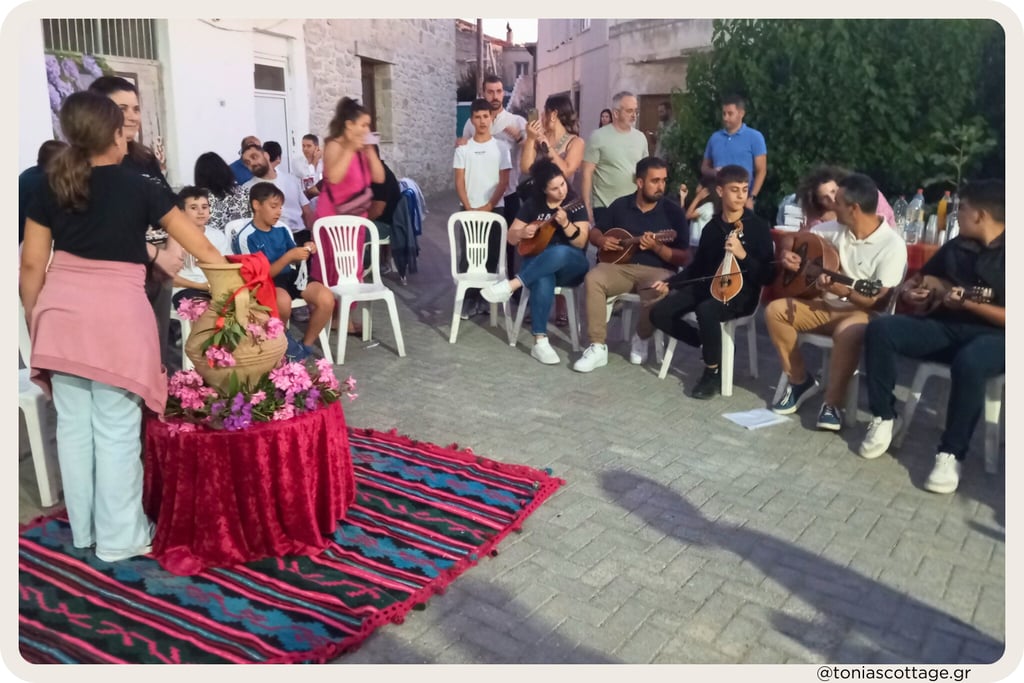

Music, mantinades, and joy
As twilight deepens, music fills the square with playful lyra tunes, spontaneous singing, and the rise and fall of laughter. Children dance in circles, elders clap along, and for a few hours, time seems to pause. The Cultural Association offers simple local fare like souvlaki, fresh bread, and cool beer, all served with the easy warmth that defines Cretan hospitality.
Traditions that connect us
The celebration of Ai Giannis reminds us that traditions are living threads that keep us connected to our roots, to the seasons, and to one another. Rituals like klidonas and the burning of wreaths honor the cycles of life and the strength of community. Through them, the wisdom of ancestors quietly lives on, carried in song, laughter, and shared memory.
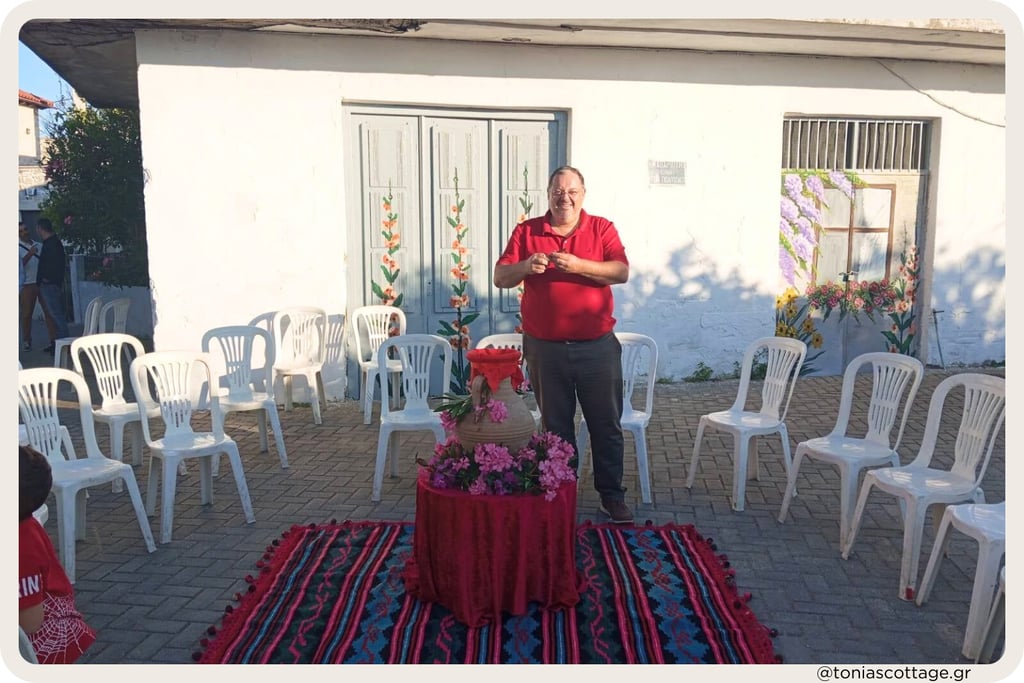

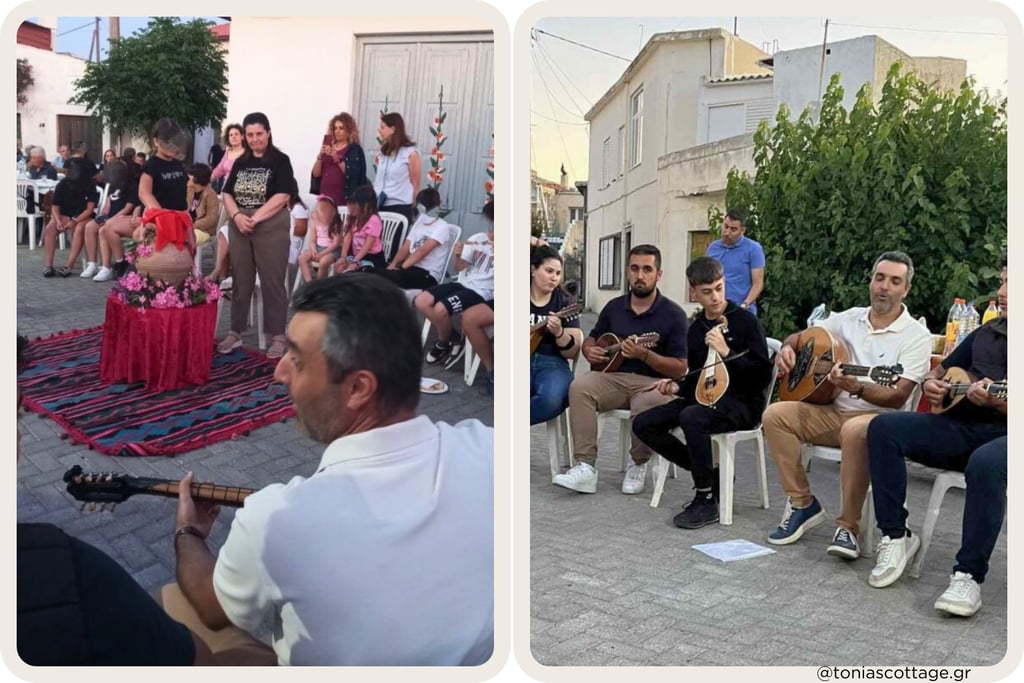

A glimpse into the roots of Klidonas
June, the first month of summer, is rich with meaning in Crete. It’s known by many names:
Kerasari for cherries, Riganá for blooming oregano, Theristis for the start of the grain harvest, and Liotropi for the sun’s highest point at the solstice.
Among these seasonal moments, Klidonas stands out as a ritual of prophecy and renewal. The word comes from “κλήδών”, meaning a prophetic sign, and its roots reach back to Homeric times. In ancient and Byzantine Crete, the ceremony blended sun worship, water rituals, and the belief in signs from nature.
On the eve of Ai Giannis, unmarried women would fill a jug, the “silent water,” drawn from a well without speaking a single word. Into it, they placed small fruits or objects marked with names. When the water was later opened, the first name drawn was believed to reveal a glimpse of destiny.
Today, this tradition continues, not as superstition but as a joyful link between past and present, carrying the rhythm of old Crete into modern village life.
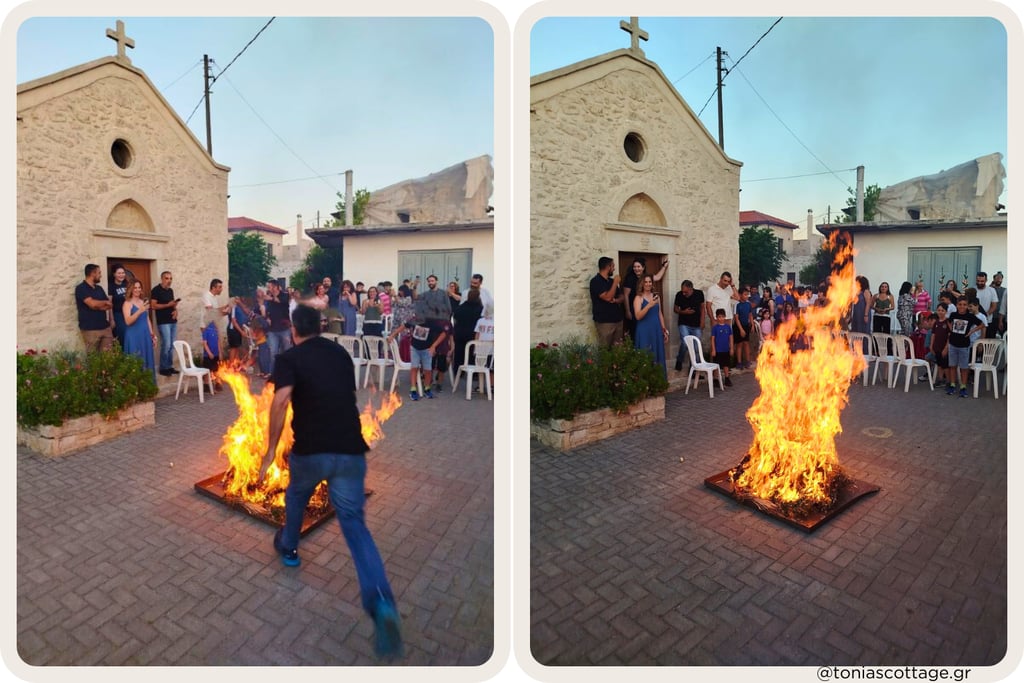

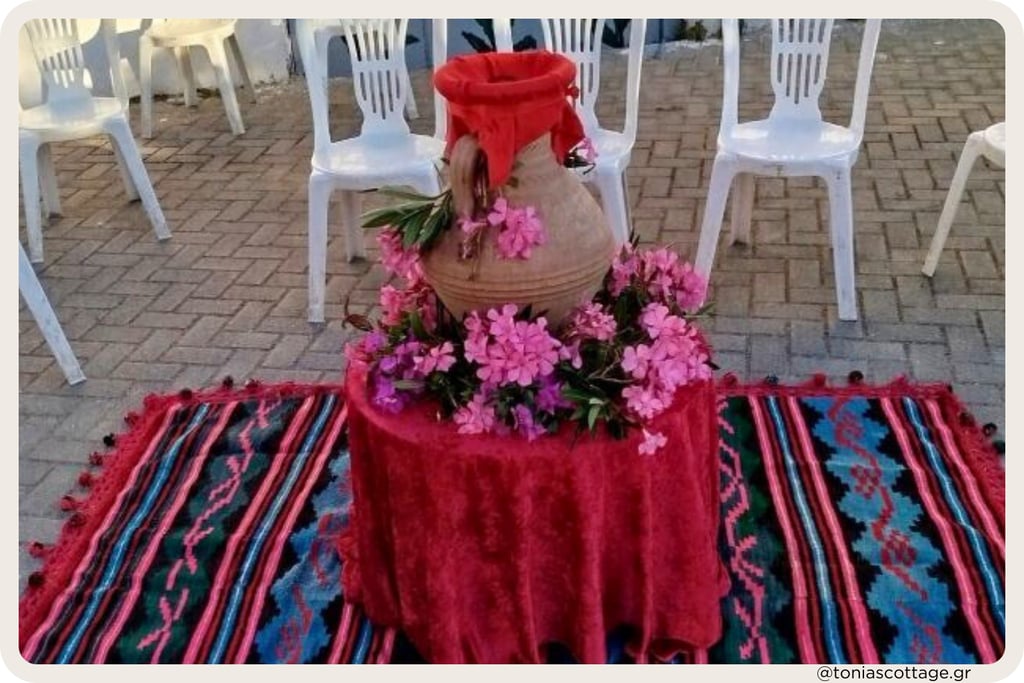

Address
Tonia’s Cottage
Alagni Village, 70300 Arkalochori
Crete Island, Greece
Contact details
(+30) 697 054 0969 (WhatsApp)
info@toniascottage.gr
https://linktr.ee/toniascottage
Made with ❤️
© 2024 Tonia's Cottage | All Rights Reserved
Airbnb | Booking.com | HomeToGo | Vrbo
Property Registration Number (AMA): 00002660089
